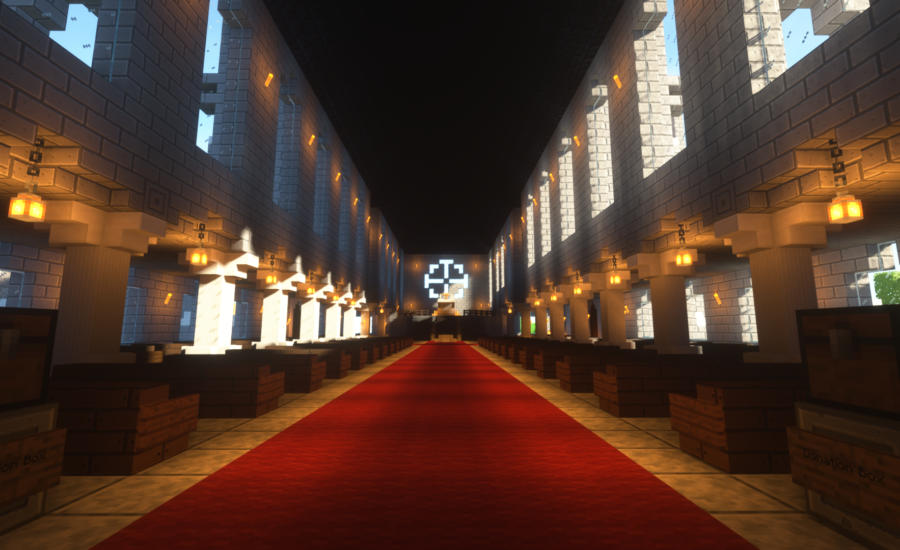The Long Dark is not only one of the best games in any genre I’ve played in many years, it’s also remarkable for having thoroughly defied the trend of mediocre crafting and survival games to use Steam’s Early Access feature. If all you had on hand was a list of features with which to judge The Long Dark, you would be likely to write it off as yet another example of this flood of terrible games, and that would be a terrible mistake.
Before I talk about why that is, it’s worth mentioning that Hinterland continues to work very hard on a game that, by all the rules of AAA publishing, they probably would have been forced to drop development for. TLD contains no loot boxes, no ongoing monetization scheme. Furthermore, by all the expectations of Steam Early Access, they also should have disappeared by now, leaving a half-finished story mode and a list of broken promises. Though they received seed funding from the Canada Media Fund, and some from a Kickstarter campaign, they can’t be making very much ongoing money at this point. Yet they continue, making massive overhauls to basic mechanics, tearing out previous work done on the story mode in order to make it a more immersive, higher quality experience in line with survival mode, and releasing several free updates that add more areas, animals, and other features. However, even in its current version, The Long Dark is well worth the purchase.
Steam review space is strictly limited, so in order to get at the heart of why I find The Long Dark so compelling, I want to zero in on a particular set of interesting mechanics that I feel illustrates the inherent tensions and sense of progression in the game, and thus its core gameplay loop: hunting animals. The progression of animal hunting revolves around the tools you have available to you, and those tools come in 3 main stages: first rocks, then the rifle, and finally the bow.
Rocks can be found on the ground outside. As you roam around in the early game looking for food, water, and shelter, rocks are your natural first weapon. They can stun rabbits, which you can then run up to and kill for their meagre amounts of meat, tiny hides and small amounts of intestine for curing. However, like a lot of the early game, this process can be finicky and arduous. To the experienced player, this can be a viable early game source of meat, but actually hitting your target with a rock is hilariously difficult, leading to a lot of accidental emergent storytelling moments. Rocks can only stun and scare wolves, and generally just serve to anger bears and moose (more than they already are). Because rocks are found objects in the outdoors, they’re usually found near sticks, bark, and other essential objects needed for early game fire-making. Because they’re heavy, they get the player thinking about inventory weight management early. Because they are so ineffectual against hostile wildlife, the player will be gradually pushed indoors, lacking a means of defense (and because of the cold).
Finding a rifle is a moment of incredible joy, and it lends the player an often false sense of security and empowerment. They have a chance to show up in several indoor locations throughout the game’s areas, and so are reflective of the second major phase of survival wherein the player is roaming around through abandoned shelters looking for the supplies left behind by civilization. They are often scrounging for crackers and peanut butter, getting their water from toilets, and living off of soda, and so finding the rifle calls the player back to the outdoors. Like all tools and equipment, the rifle needs maintenance or it will eventually break, so you’re forced to stay on the move looking for cleaning kits and ammunition, which is also very scarce. Each bullet feels incredibly precious, and firing the gun for the first time is quite an experience, a mixture of triumph and sadness. The rifle becomes a friend and a comfort to the player in the hostile landscape, but it is a comfort tinged by the inevitability of its loss. Eventually, you know you will no longer be able to find cleaning kits. The ammo will run dry. So, even though the rifle can delete wolves and deer, giving you plentiful sources of hides, meat, and gut, and keeping you safe from wolf attacks (provided you’re quick on the trigger and a good shot), you have to keep moving to make the most of it.
Moving around from area to area in The Long Dark is at first a lethal idea. It took me about 40 hours before I was really comfortable picking up and moving between safehouses in different zones. And all those hides you get take many days to cure and be usable for crafting. They have to sit on the floor indoors somewhere, and that means tying yourself down to a particular place for up to a week. Longer, if you continue to make kills for more meat. You gradually start to learn the balance of nature, taking only what you need and conserving your energy as much as possible between hunts. You develop an attachment to an area, but you can’t stay there indefinitely. Hides are heavy, slowing you down. Uncured gut stinks, attracting predators to you when carried. You have decisions to make as to how long you’ll stay, what you’ll take with you, how often to make kills, what to take with you when you go. Eventually the left-behind non-animal food you find will run out in a given area. When will you pick up and move? Often as I was learning the game, the decision to leave the safehouse would be the first in a series of bad ones leading to my death.
Gradually, as the player comes to master moving between areas, managing their inventory, having multiple safehouses where hides are drying out, the landscape starts to become familiar, nature begins to bow to your will just enough to let you start to really thrive. You’ll make clothing from animal hides, some of the best in the game, and live off of deer meat almost exclusively. You’ll boil water over fires, no longer made out of desperation to avoid freezing, but in places and times you’ve chosen because they’re expedient for cooking meat and making water. You’ll move confidently, quietly, calmly. And perhaps, along the way you’ll come across saplings: maple, and birch. You’ll discover forges.
Saplings can be dried out like hides and guts, and are used along with cured gut, crow feathers, and arrowheads to make the bow and arrows, and it’s this phase of hunting that represents the endgame of The Long Dark. In order to craft the bow, you need to have a complete understanding of many different mechanics. The way crows gather around dead bodies and drop their feathers. The way coal is needed to get a fire hot enough to forge metal, and where forges are located in the world. By this point, you’re no longer using found objects, discarded tools, but knives and hatchets you’ve made yourself. And when it all comes together, you have a tool that is far more efficient than the rifle and requires less maintenance and scrambling around looking for ammunition. You have the tools and knowledge at your disposal to make more long-term settlements if you choose, and the confidence and skill to go after the largest animals, to fully master your environment. If you can make it to the bow, you can survive indefinitely. This isn’t necessarily because the bow is hands-down better than the rifle in all ways. Rather, it’s because getting there requires you to have mastered the game around the bow and beyond the rifle.
However, you’re never really free from equipment degradation. You’ll need more saplings to make more arrows and another bow eventually. You’ll need more hides to repair that sweet endgame animal clothing. Each day will bring a new set of objectives, not given to you in a list but arising naturally from the game’s mechanics and your desire to stay alive. This is the biggest reason why I find The Long Dark so immersive, compelling, and engrossing.




